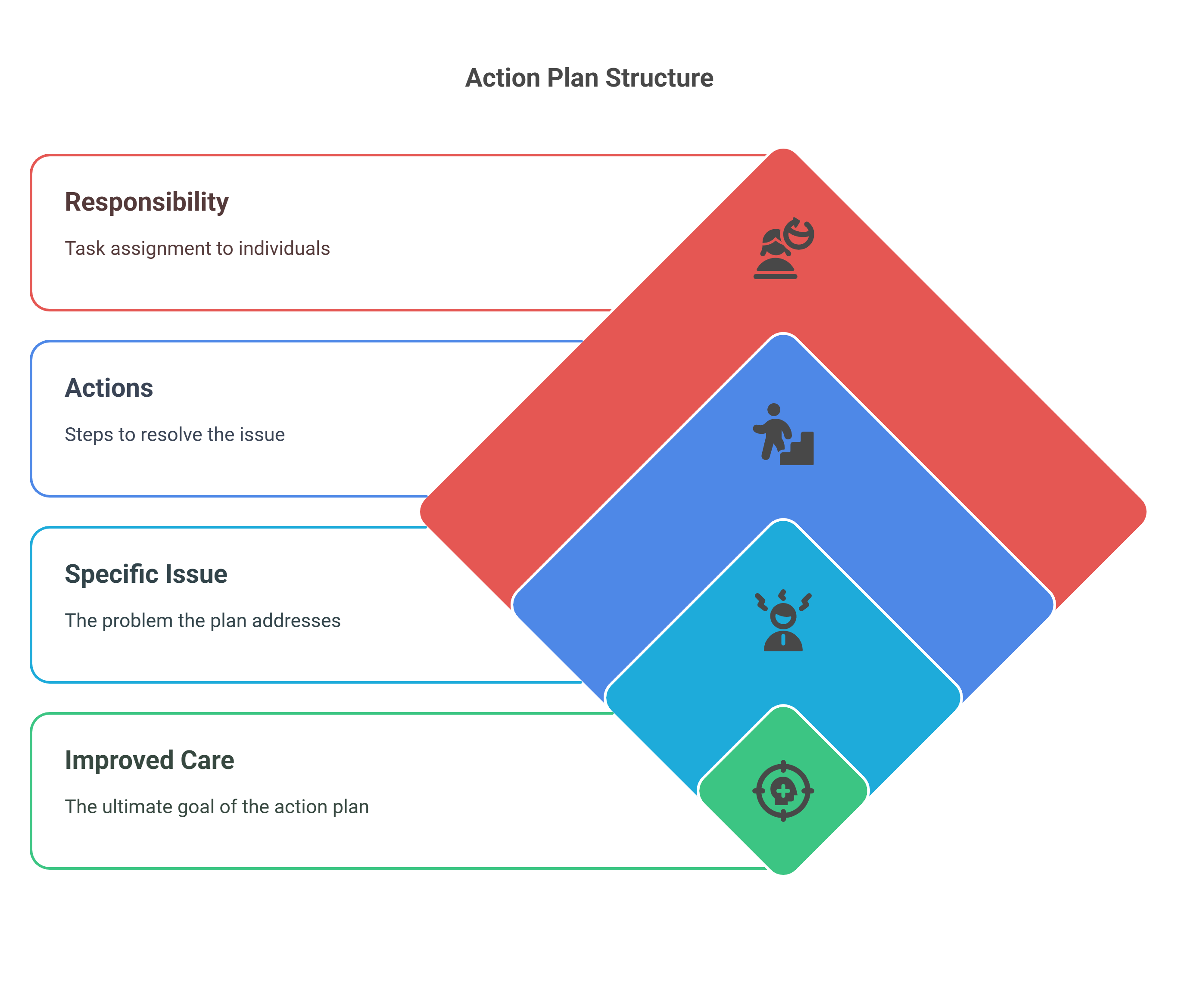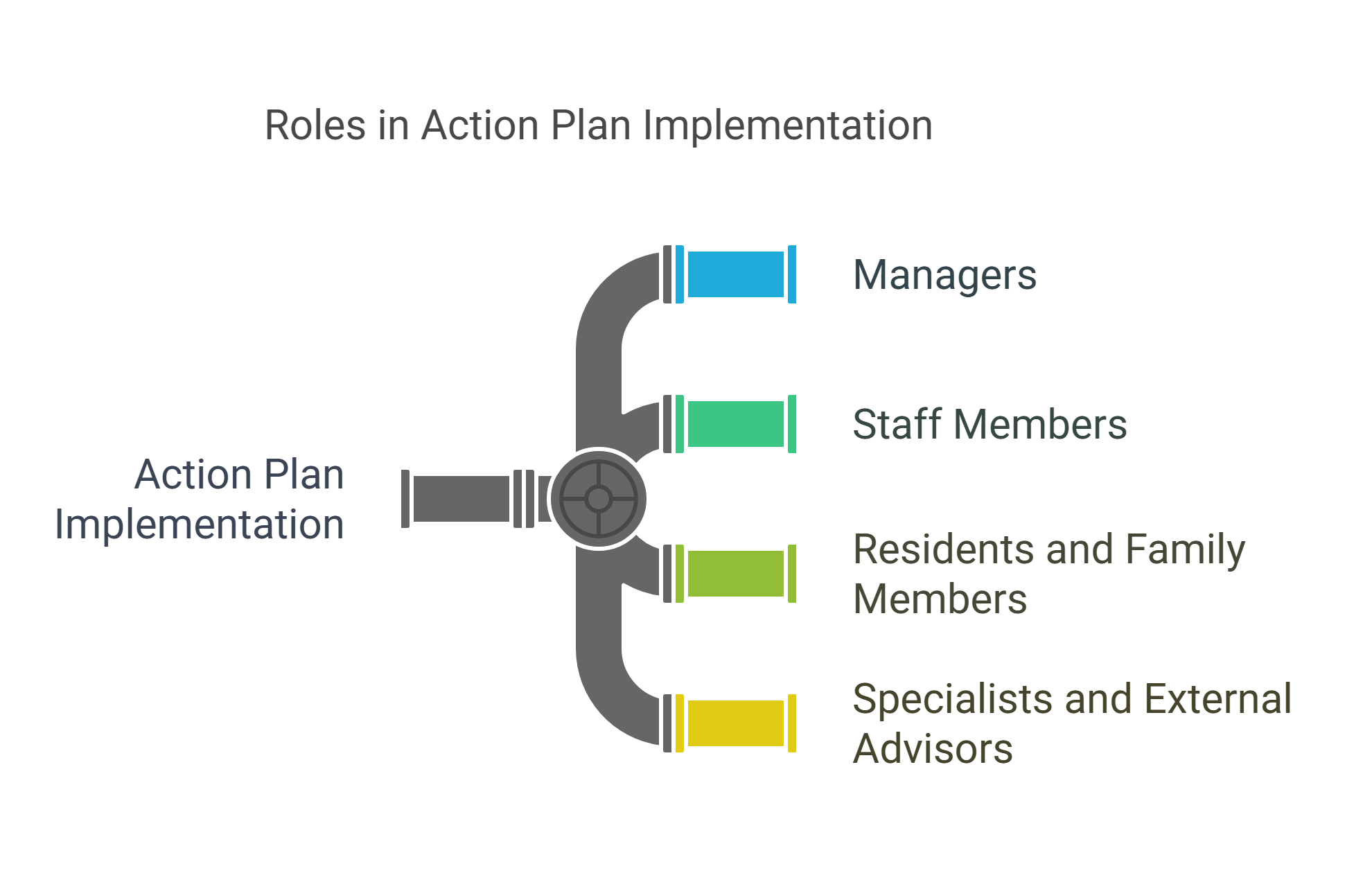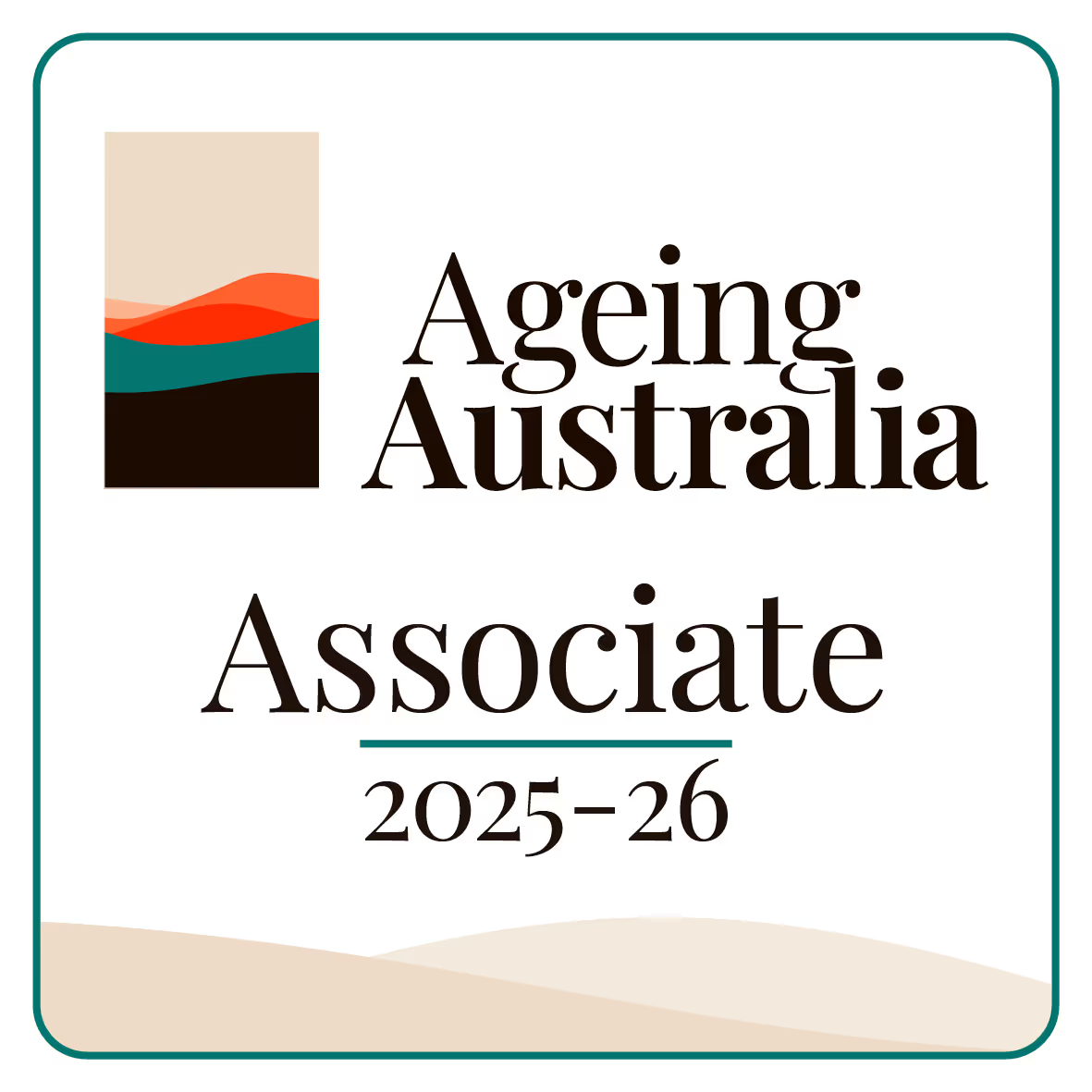What is an Action Plan?

An action plan is a document that lists the steps that a residential aged care facility will take to address a specific issue or to improve certain areas of care. This plan is written clearly and is designed to show what actions need to be taken, who will be responsible for each task, and the timeline for completing these tasks. An action plan makes it easy for everyone involved to understand the changes that are planned and to follow what needs to be done.
Why is an Action Plan Important?
An action plan is important because it breaks down a large problem into smaller tasks that can be done one step at a time. The plan gives guidance to staff and management when there is a need to improve the safety or quality of care. It also helps the facility to stay on track with goals that have been set. An action plan shows that the facility takes matters seriously and is willing to work step by step to make things better. It is a useful tool when the facility needs to correct any issues that have been found during reviews or audits.
How is an Action Plan Developed?
The development of an action plan begins with identifying a need for change or improvement. This need might come from feedback from residents, families, or staff, or from an external review. The first step is to write down what needs to be fixed or improved. Next, the facility lists the tasks that must be done. For every task, the plan states who is responsible for doing it and when it should be finished. The timeline is very important because it helps everyone understand how long the process will take. Finally, the action plan is shared with everyone in the facility. This sharing makes sure that all team members know what is expected and can work together to complete the tasks.
Who is Involved in the Action Plan Process?

Many people are involved in the creation and implementation of an action plan. Managers, staff members, and sometimes residents and family members take part. The managers lead the process by organizing meetings where everyone can give ideas and suggestions. Staff members help to write the plan and decide on practical steps that can be taken. In some cases, a specialist or an external advisor may help to check that the plan covers all necessary areas. When every person in the facility has a clear role, the action plan is more likely to work well and bring about real improvements.
What are the Main Benefits of an Action Plan?
An action plan helps to make problems easier to solve. By breaking down a problem into smaller parts, the plan makes it clear what actions are needed and when they should be completed. This clarity can make the facility a better place to live for residents. The plan also helps to keep track of progress. When there is a written record of what needs to be done, it is easier to check if each task has been finished on time. In addition, an action plan shows that the facility listens to feedback and takes steps to change any issues that may affect the care or the living conditions. This process builds trust between residents, their families, and the facility staff.
How is the Action Plan Followed Up?
After an action plan is written, it is important to keep track of how well it is working. Managers review the plan regularly and check if the tasks have been completed on the dates that were set. If any task is not finished on time, the plan may be updated to include a new timeline. The facility also keeps records of all the changes and actions that have been taken. These records are very useful if there is a need to check on the progress or to show that the facility is working to improve. A clear follow-up process means that the action plan is not just a written document but a living guide for making real changes.
Challenges in Creating and Using an Action Plan
Sometimes, creating an action plan can be challenging. It takes time for staff and managers to meet and agree on what needs to be done. Sometimes, there may be disagreements about which tasks are most important. In addition, there may be delays if tasks take longer than expected. However, these challenges can be overcome by working together as a team and by keeping the plan simple and clear. A written action plan that is easy to understand helps everyone to stay focused on the work that needs to be done.
Final Thoughts
An action plan in aged care is a useful tool that helps a facility to improve the quality of life for its residents. It shows what needs to be done, who will do it, and when it must be completed. The plan is shared with everyone so that all team members understand their role. With a good action plan, a residential aged care facility can work steadily to address any issues and to create a better environment for its residents. This clear and written approach makes the facility a better place to live and work.






